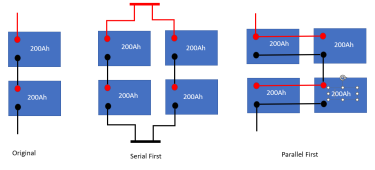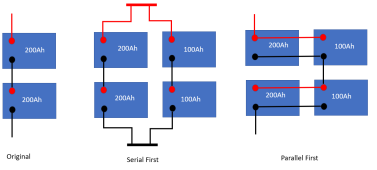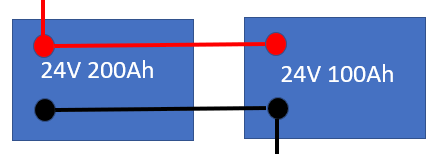Jennifer-3456
Solar Enthusiast
I'm a real beginner at this, so this is surely a kind of "stupid" question... I'm considering buying a 24v all in one inverter (probably Growatt, maybe MPP Solar) for my camper van. I want the equivalent of 400 ah 12v batteries (or 4800 watt hours). I could get A) two 200 ah 12v batteries and connect them in series, or B) one 200 ah 24v battery.
If I go with A, how do I expand the system? Any additional batteries in the series would increase the voltage past 24v. Could I make another set of two 200 ah 12v batteries connected in series and then connect the two sets in parallel? And is there any way to add another 100 ah at 12v (rather than 200 ah)?
If I go with B and want to expand later on, do I have to add another 200 ah 24v battery? Could I add only another 100 ah 24v battery and connect it in parallel (or does it have to be another 200 ah 24v battery)?
I don't want to get four 100 ah 12v batteries because I simply don't want to manage four batteries and take up that much space -- unless there's a really good reason to do it that way.
Thanks for any help you can offer!
If I go with A, how do I expand the system? Any additional batteries in the series would increase the voltage past 24v. Could I make another set of two 200 ah 12v batteries connected in series and then connect the two sets in parallel? And is there any way to add another 100 ah at 12v (rather than 200 ah)?
If I go with B and want to expand later on, do I have to add another 200 ah 24v battery? Could I add only another 100 ah 24v battery and connect it in parallel (or does it have to be another 200 ah 24v battery)?
I don't want to get four 100 ah 12v batteries because I simply don't want to manage four batteries and take up that much space -- unless there's a really good reason to do it that way.
Thanks for any help you can offer!





